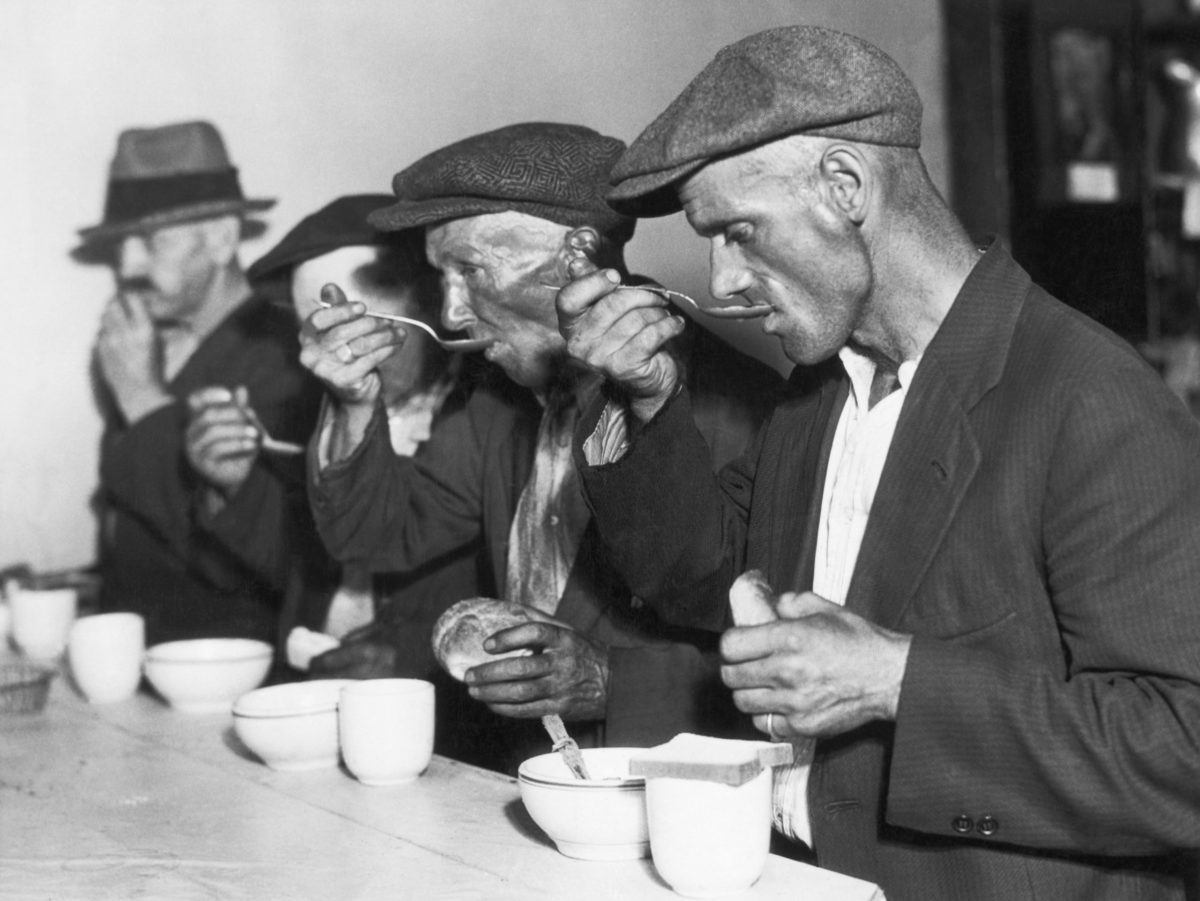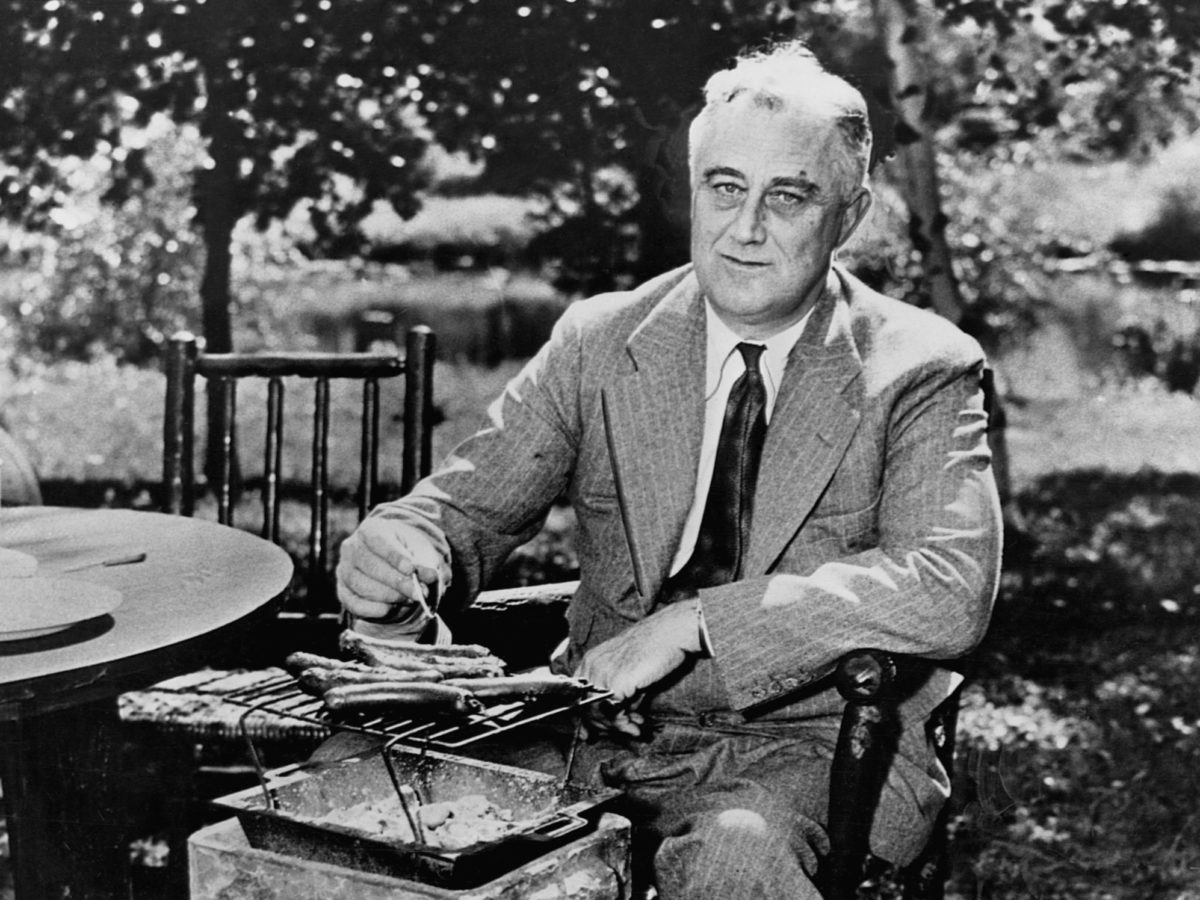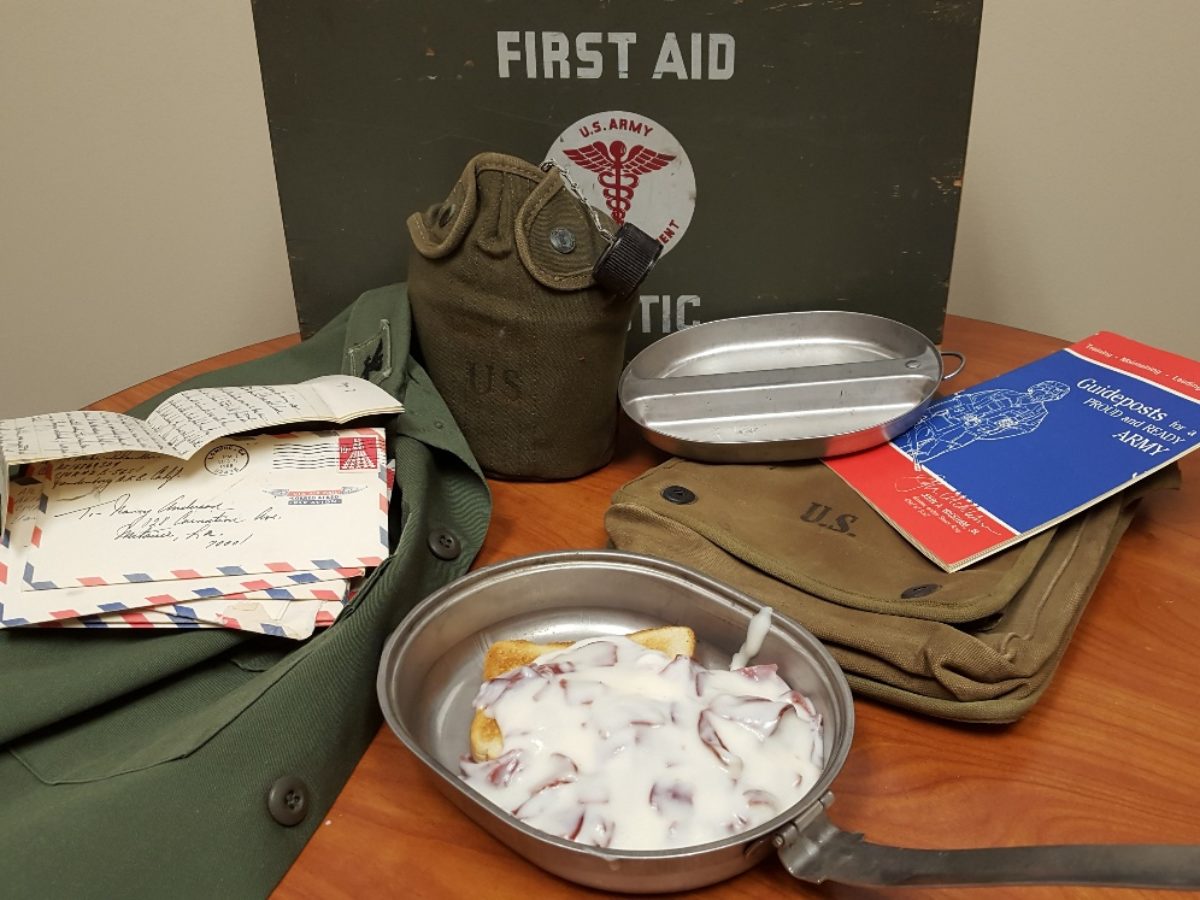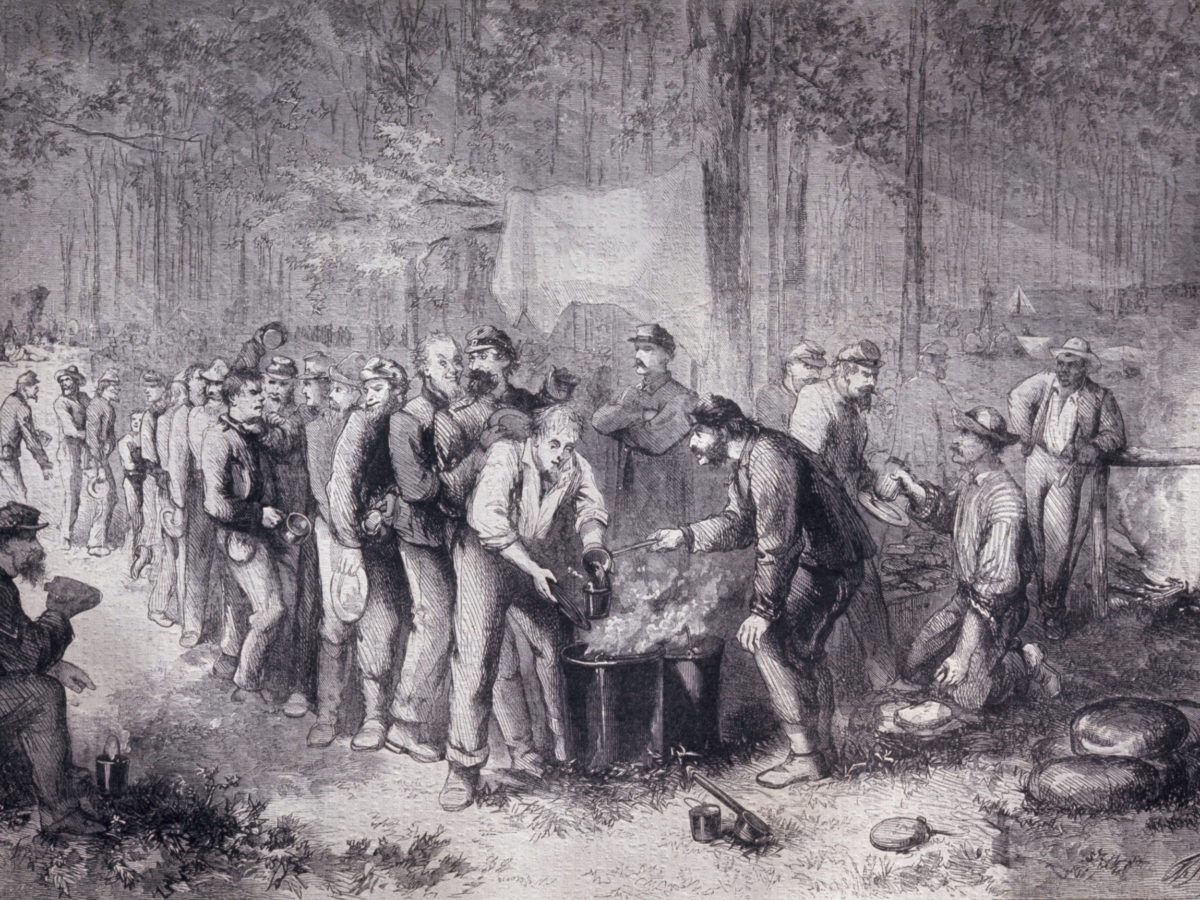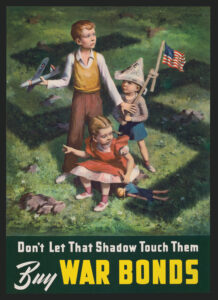Today, people are familiar with Black Fridays, the day after Thanksgiving sales across the United States. But a far more notable Black Thursday happened on Oct. 24, 1929. That was the ominous day that the stock market crashed and launched America into a full-scale depression. By 1933, almost 15 million citizens were unemployed and nearly have of the financial institutions across the country had gone broke. Industrial production was halved and scores of people became homeless.
Though the Depression was one of the darkest times in American history, Americans toughed it out with their usual creativity and pluck, and we have those lean days to thank for some of the most popular foods we enjoy today — as well as more than a few that we’ve gladly forgotten.
GET HISTORY’S GREATEST TALES—RIGHT IN YOUR INBOX
Subscribe to our HistoryNet Now! newsletter for the best of the past, delivered every Monday and Thursday.
Hard Times, New Foods
A bright spot during the Great Depression? Americans started bread lines and soup kitchens to keep everyone fed. This elevated the spirits of the downtrodden populace and introduced new foods to the general public, many of which are still consumed today.
The most interesting food type to become popular across the country from that era was ox-tail soup. It was a way to use the entire animal with nothing going to waste, from the nose to the tail. The dish harkens back to the 17th century England, but the French, Flemish, Korean and Chinese also have a stake in its origin. In this country, ox-tail soup’s popularity began before the American Revolution and was oftentimes eaten by slaves in the South, who had to make do with the food scraps their masters turned their noses up at.
Ox-tail soup during the Depression was a simple fare with basic components — you simply chop up the tail of an ox or cow, leaving the bone attached. In Korean recipes, the meat is barbecued or fried or even parboiled and put in the mix with a daikon radish and an onion.
Down in Louisiana, there is a Creole version of the dish. Tomatoes are a popular vegetable in the Bayou State, so it’s one of the major ingredients of the ox-tail soup. A must-have is Creole seasoning and the “holy trinity” of onions, bell pepper and celery stalks. Add some dried chiles, an abundance of herbs and spices along with the basic salt and pepper to achieve the desired tangy soup.
Campbell’s, Ritz and Kraft Take Off
Some food brands became critical to people’s lives during the Depression.
Recommended for you
Simple to heat and eat, a simple can of Campbell’s soup went a long way for many, and by the end of the Depression, Campbell had five different flavors for consumers: tomato, chicken, oxtail, vegetable and consommé. The company launched massive advertising campaigns in magazines, newspapers, radio during the height of the Depression, and their signs popped up everywhere — even on streetcars. Their soups proved so popular that they expanded to Europe and Canada while the hard times still went on.
Campbell’s Soup wasn’t the only brand of food to make huge advances during the hard times of the Depression. Kraft’s macaroni and cheese jumped onto the scene in 1937. A salesman for the Tenderoni Macaroni Company started a side business of selling noodles with packets of grated Kraft cheese to locals. It was a hit, and Kraft started churning out boxes of the mixture for 19 cents per container, each making four meals. (The meal itself was not a new idea: Thomas Jefferson served it at his home after trying a version of it in France.)
Ritz Crackers also launched a major campaign during the Depression that resulted in it being a substitute for apples in pies. It doesn’t sound as patriotic as the real thing. but for the poor, mock apple pie was a hit. The addition of lemon juice and the texture of the crackers made the simulated apple slices seem real enough. Like many culinary ideas, this one can be traced back to the 1880s, when there was an apple shortage nationwide and people were desperate for ideas to satisfy their taste buds — crackers making a cheap substitute.
Mulligan Stew
Alongside the railroad tracks existed many a hobo camp during the 1920s, and a staple there was Mulligan stew. While they could generally scrounge up a few vegetables (carrots, potatoes and cabbage or lettuce were popular) and sometimes meat scraps, one of the most important ingredients of the stew was tobacco. You would use the loose-leaf brand or squeeze it out of the ends of cigarettes to gather enough pieces to flavor the dish. One desperate item used to bulk up the Mulligan stew was lint. Yes, lint from clothing. (Times were indeed rough.) If you could gather some bread and make an easy gravy, you could create SOS, an acronym for “s— on a shingle.”
For those families still living in a home, savory beef gelatin could be created with a mold by mixing gelatin and beef broth. Old gravy from the ice box stretched out a meager supply of meat.
Bacon Spaghetti and Involuntary Vegetarians
One of the most popular dishes today, spaghetti, had a variant to reflect the hard times. Instead of meatballs, mothers would use dried bacon to add a meat flavor, as ground beef prices were high.
Salads became a healthy alternative during the Depression for many people who did not have much food. Soup kitchens served them with the soup, which is still common today. To mimic the nose-to-tail option of cows. Lots of leafy items were used: Radish leaves became popular addition, as did dandelion greens, which were another palatable ingredient for salads. Dandelions were also good for making tea, a recipe that dated back to antebellum times.
Eleanor Roosevelt’s Prune Pudding
Eleanor Roosevelt consulted with Cornell University to create myriad foods that were both inexpensive and easy to make. Topping the list was prune pudding. Not the most attractive food to eat, it was still tasty and filling. Some of the more unusual dishes made during the Depression were milkorno (or with wheat or oats). With the assistance of some of the Cornell scientists, they developed this meal from powdered skim milk, cornmeal and salt.
Dinners served at the White House during this time were known for their simplicity: Deviled eggs drenched in tomato sauce were popular, as well as beans in tomato stew. Eleanor Roosevelt’s own contribution was her own version of spaghetti. She boiled the noodles until mushy and added equally steamed carrots. She topped off the dish with a white sauce, a basic bechamel created from milk, flour, salt and butter.
Peanut Butter-Stuffed Onions (Not a Typo)
One of the most amazingly curious recipes was devised by the Bureau of Home Economics was peanut butter-stuffed onions. This awkward dish was heavily promoted in advertisements across the land.
The United States managed to crawl out of the Great Depression after a decade of very hard times. And though some of these Depression-era foods have started appearing again in recent times, sometimes with fancier ingredients in high-end restaurants, we hopefully won’t see a comeback for peanut butter onions and edible lint.
historynet magazines
Our 9 best-selling history titles feature in-depth storytelling and iconic imagery to engage and inform on the people, the wars, and the events that shaped America and the world.


